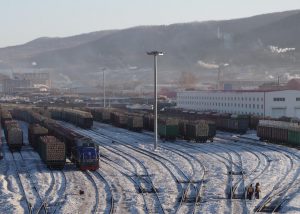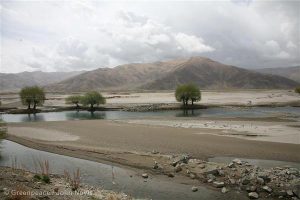China has launched a trial ban on commercial logging in state-owned forests in the vast north-eastern province of Heilongjiang bordering Russia, home to much of the country’s timber industry. Forestry experts have hailed the ban as a major step forward, predicting it will enable timber supplies to recover and shift the industry’s focus towards improved forestry management.
To make the ban stick, the central government has allocated 2.35 billion yuan a year to cover forestry workers’ living costs between 2014 and 2020, chinadialogue has learned from the State Forestry Administration (SFA). If the trial ban is successful, the policy may be extended throughout north east China and Inner Mongolia.
Replacement industries
Sheng Weitong, a forestry expert and former advisor to China’s cabinet-level State Council, told chinadialogue that some laid-off loggers "will become forest rangers and learn how to manage forests because the vast numbers of young and semi-mature trees in these districts need management. Workers here neglected forest management in the past.”
Others will be encouraged to develop alternative industries such as tourism, growing blueberries, ginseng, edible mushrooms, and flowers, or raising chickens and frogs. Existing laws are thought sufficient to tackle illegal logging.
The ban in Heilongjiang affects two important state-owned logging firms, Longjiang Forest Industry and Daxing Anling Forestry Company (Anling Forestry), and signifies a shift towards forest conservation, rather than utilization, Sheng says.
The two companies manage 18.45m hectares of forests, covering 39% of the entire province of Heilongjiang, according to the official Xinhua news agency.
During the last century, warfare and unrest — from warlord battles in the Republican era through the Anti-Japanese war in Manchuria — depleted and damaged the forests. More recently, economic growth has taken a further toll. More than 600 million cubic meters of timber has been extracted from these woodlands since the mid-twentieth century. Ever-increasing logging volumes meant that by the 1990s, there was double crisis of resources and economics — depleted supplies and a gloomy commercial future for timber firms.
“In the recent past, China has extracted forestry resources to support economic development,” says Zhang Yuxing, chief engineer at SFA’s planning institute. Now, he says, China will feedback money into the forests as it has developed a more powerful economy.
Why Heilongjiang?
Heilongjiang has more natural forest than any other province in China, making it a symbolic choice, says Sheng.
“A halt here means an end to the way China has been utilizing forestry resources since 1949, and creates an opportunity for China to move to an era of improved forestry management, agrees Hou Yuanzhao, a researcher at the Chinese Academy of Forestry, adding that Heilongjiang’s state-owned forests are the center of China’s forestry industry.
Heilongjiang’s forests also stabilize the regional environment of north-east China, helping to secure the country’s grain supply as the north east is an important rice-growing region. Long-term depletion of these forests could put China’s so-called “north-eastern granary ” at risk if it continues.
The northeast’s black soils and major river basins make it an important rice producing region, whose forests serve to protect soils and fields, preserve water supplies, moderate the strongs wind and shelter farmlands.
The ecological worth of the Heilongjiang forests is becoming more important than their economic value, China Radio International reported. The region is an important part of the ecosystem of north east Asia and acts as a buffer zone for the ecologies of north and north-eastern China, protecting the Songnen and Sanjiang plains, and so has a key role in protecting rainfall and ensuring agricultural output.
Protecting the north-eastern forests requires attention to how they are managed, so forest ecosystems should be restored as soon as possible. Poor forest management in the past means that much wood in the Heilongjiang forests has died off, and if the situation is not managed it could cause disaster, Tang Shouzhen of the Chinese Academy of Sciences told chinadialogue.
Timber supply to increase
The ban will permit trees to recover from overlogging, strengthening the forests’ ability to act as an ecological buffer zone, according to the SFA’s Zhang. Another benefit of the ban is that it will increase the supply of available timber, restoring the forests’ status as strategic reserves, as more trees will reach maturity about 10 or 20 years after felling stops, he says.
Planting rare trees will increase the amount of valuable timber, such as Korean pine, camphor, northeast China ash, and the Amur cork tree.
If the ban lasts 10 years, Anling Forest’s timber stocks per hectare will rise from about 77 cubic meters to 88 – adding more than 70 million cubic meters of timber. Longjiang Forest Industry’s per hectare stocks will increase from 95 cubic meters to 110, an additional 120million cubic meters.
But Zhang says the halt should last at least 20 years, if not longer.






